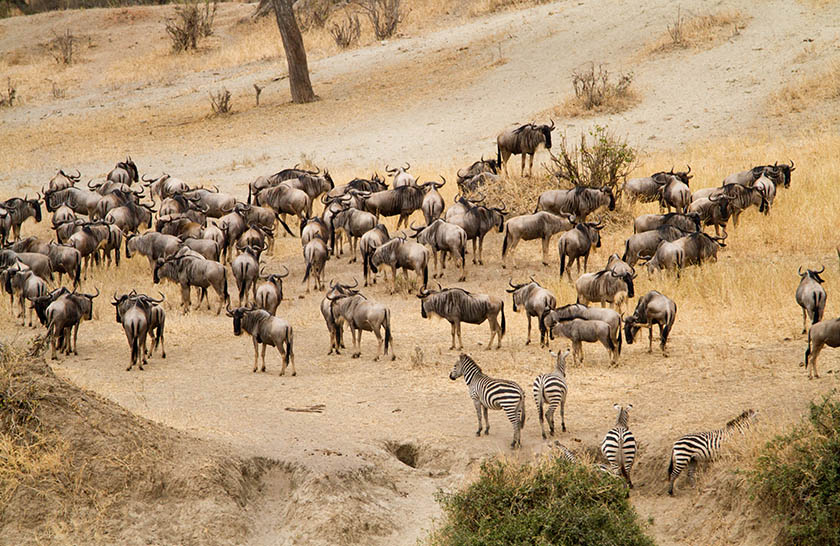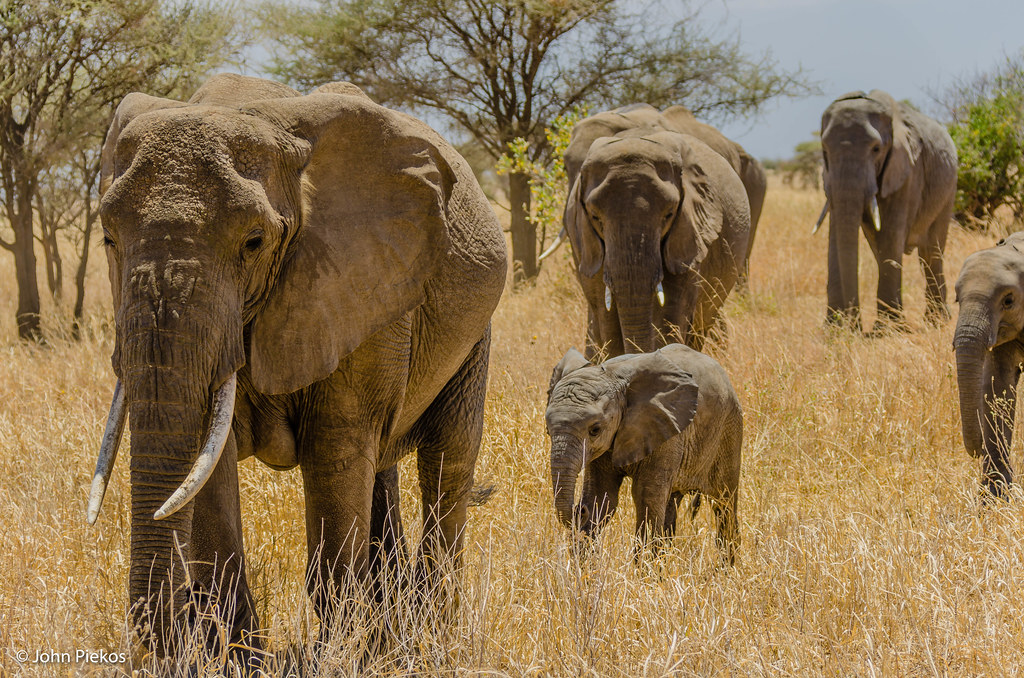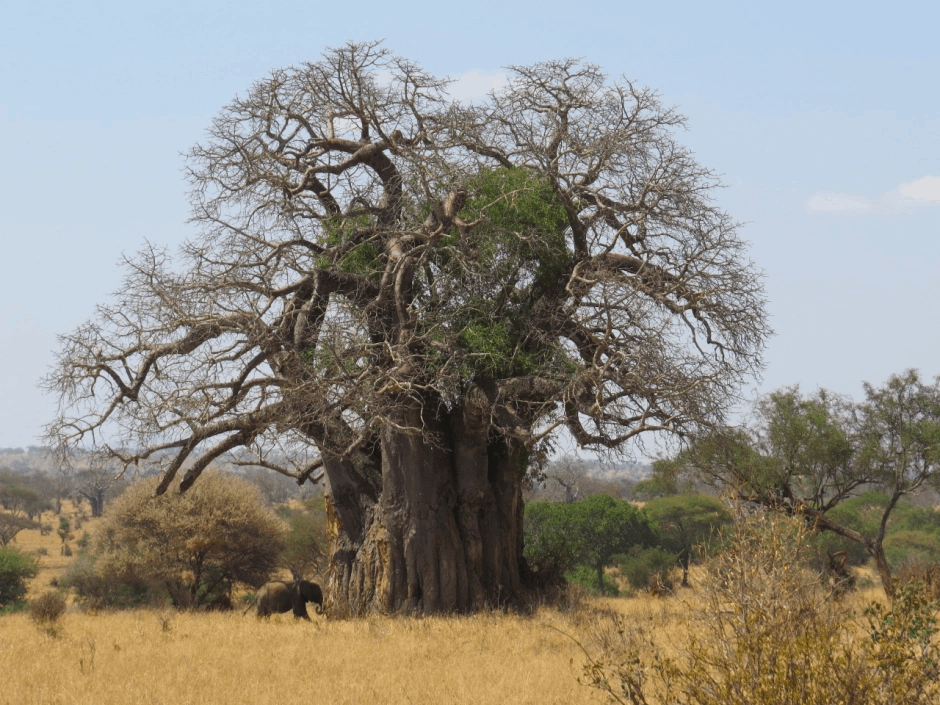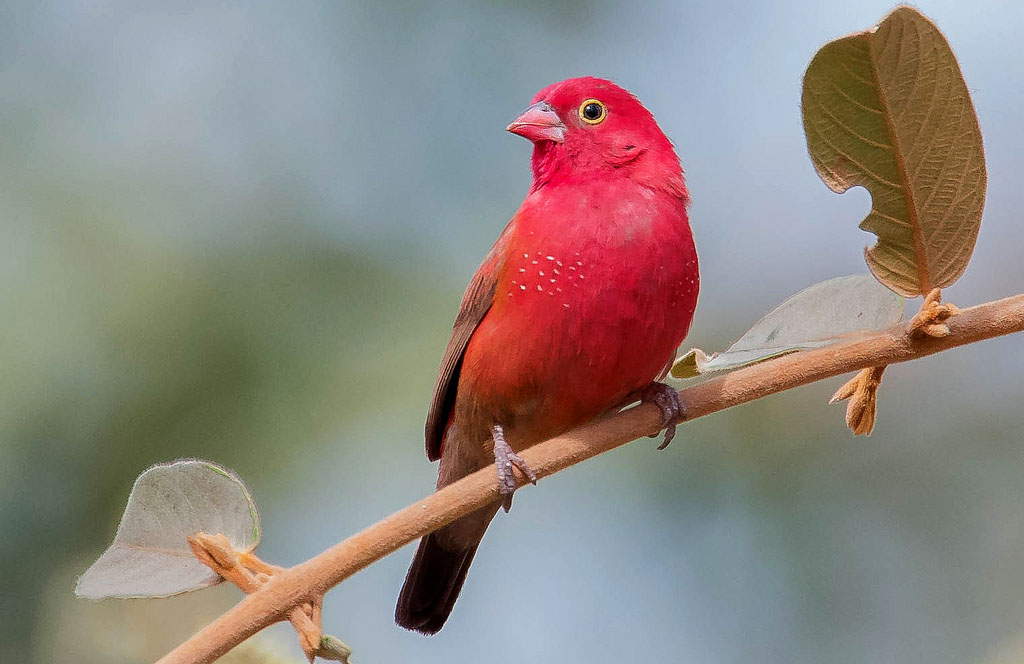Tarangire National park
One of Tanzania’s top wildlife locations, Tarangire National Park is known for its big elephant herds and the country’s best birdwatching. Around 250,000 animals migrate into the park during the dry season, making it one of the most popular wildlife destinations in the country.
The 2,850 square kilometer Tarangire National Park is the sixth-largest national park in

Location of Tarangire National park.
Tarangire National Park, one of Tanzania’s top wildlife destinations, is renowned for the largest elephant herds and the greatest birdlife in the nation. During the dry season, some 250,000 animals move into the park, making it one of the most well-liked wildlife destinations in the nation.
The sixth-largest national park in Tanzania is Tarangire National Park, which spans 2,850 square kilometers.
In the Northern Tanzania Safari Circuit, Tarangire National Park is located close to Serengeti National Park, Ngorongoro Conservation Area, and Lake Manyara National Park.
The Tarangire River, a perennial river in the park’s northern region, serves as the primary water supply for both the ecosystem and the park as a whole. The Tarangire River, which exits the park in the northwest quadrant and empties into Lake Burungi, is where the park gets its name. There are a number of large wetlands along the river’s banks, especially in the south, which often dry up into verdant plains during the dry season.
Tarangire National park history.
The Tarangire National Park was first established in 1957 as a game reserve and later improved and gazetted as a national park in 1970.
The south of the park is the best place to go if you want a less crowded safari experience. Tarangire National Park is a fantastic Tanzania safari destination that you will appreciate visiting because it delivers a real African sense of the Tanzanian countryside.
Attractions in Tarangire natonal park
The Tanzanian safari destination of Tarangire National Park is renowned for its large population of elephants, animal movement, baobab trees, tree-climbing Africa pythons, and other features. The Tarangire National Park’s attractions are listed below.
The annual wildlife migration
The wildlife migration, one of Tanzania’s most fascinating wildlife phenomena, takes place at Tarangire National Park, one of the region’s most popular parks. Within the larger Tarangire ecosystem, there is a lot of migratory migration that occurs in Tarangire National Park.
This animal migration features enormous numbers of elephants, hartebeests, wildebeests, gazelles, and zebras moving through the park as well as various predators like lions and leopards, albeit it is not as massive as the Great Wildebeest Migration.

Large Elephants population
One of Tarangire National Park’s main draws for visitors is its vast herds of elephants. The park is renowned worldwide for having the largest elephant population, which is also thought to be the highest in all of Tanzania.
Several enormous elephant herds of roughly 300 animals each can be seen on a game drive in Tarangire National Park as they graze on the savannah plains and dig in the dry Tarangire River bed in an effort to find water in the underground streams, especially during the dry season.

Wildlife /Animals
A huge number of other wildlife species, such as wildebeests, eland, gazelles, impala, zebras, kudu, rhino, hartebeest, cape buffaloes, and antelopes such the long-necked gerenuk and fringe-eared oryx, as well as a big population of elephants, can be found in Tarangire National Park.
Birds of Tarangire National park.
With over 550 different kinds of colorful and rare birds, Tarangire National Park is ranked as one of the best places in Tanzania to go birding. Birds in Tarangire live in the vast network of marshes that are primarily located in the park’s southern and eastern regions.
Among the many species of birds found in Tarangire National Park are crested francolins, hoopoes, yellow-necked spurfow, hornbills, guinea fowl, steppe eagles, brown parrots, the enormous lappet-faced vulture, white-bellied go away birds, bateleur eagles, mousebirds, Kori bustards, yellow-collared lovebird.
The Boabab Trees
The Giant Baobab trees are a signature and unique feature in Tarangire national park, these gigantic trees are also referred to as “The tree of life” and they can store about 300 litres – 1000 litres of water within its trunk.
Baobab trees have a life span of about 600 years, according to local tales it is that the trees would move around the Africa continent. However, due to their aimless movements God got annoyed with them and decided to plant the upside down as a way of limiting their movement.

Tarangire National park swamps.
The vast network of swamps that make up Tarangire National Park’s landscape dominate the park’s southern and eastern regions. These swamps serve as a habitat for a variety of birds and animals, including elephants, cape buffalo, silale swamp lions, African wild dogs, and tree climbing pythons, among others. These swamps are home to vulturine Guinea pigs, Donaldson-nightjars, Smith’s Yellow-collared lovebirds, Great White Pelicans, and other birds. The Fulvous Whistling-Duck, Rufous-tailed Weaver, White-faced Whistling-Duck, Northern Pied Babbler, Von der Decken’s Hornbill, Northern White-crowned Shrike, and Pink-breasted Lark are just a few examples.
Activities in Tarangire National park
Game watching / Game drives
The main Tanzanian safari activity in Tarangire National Park is game viewing, which can be done along five different routes: the Lemiyon route, the Gursi way, the Lamarku route, the western Lake Barungi route, and the Kitibog Hill route.
In the comfort of a 4×4 vehicle, you can enjoy views of an abundance of wildlife, including wildebeests, eland, gazelles, impala, zebras, kudu, rhino, hartebeest, cape buffaloes, and antelopes like long-necked gerenuk and fringe-eared oryx, among others. Game drives are offered in three sessions: morning, afternoon, and night game drives.
Bird Watching
Tarangire national park is home to more than 550 bird species, including resident species and migratory species that arrive in the park from Europe and North Africa from November to April. Tarangire is regarded as one of the top birding locations in Tanzania.
The greatest times of the year to go bird watching are from November to April since migrating bird species are there and resident species are in breeding plumage, making them easy to spot. Bird watching in Tarangire National Park is ideal early in the morning or in the evening. Visitors may see Tarangire National Park’s nighttime and nocturnal wildlife including lions, leopards, hyenas, and African wild dogs during night game drives.
Among the birds to watch out for on a Tanzania bird watching safari in Tarangire National Park are crested francolins, hoopoes, yellow-necked spurfow, hornbills, guinea fowl, steppe eagles, brown parrots, the enormous lappet-faced vulture, white-bellied go away bird, bateleur eagles, mousebirds, Kori bustards,
Woodlands, marshes along Tarangire River, and The Lemiyon Triangle, which is located in the park’s northernmost section, are among the best places to observe birds in Tarangire National Park.

Nature Walks
For those who enjoy the outdoors, taking a nature walk in Tarangire National Park is a fantastic Tanzania safari activity. There are two daily sessions, with each lasting between one and three hours.
The ideal places in the park to trek and go on nature walks are known to an experienced, armed guide. This activity makes use of the park’s many nature trails, giving you a chance to get closer to the park’s natural surroundings and see a variety of birds and other animals that live there.
Sight Seeing
The Tarangire River, which is surrounded by magnificent baobab trees, and several swamps, including the Silale swamp, which is 30 square meters in size, are some of the magnificent spots in the park for sightseeing experiences. Tarangire National Park has the most incredible landscape in Tanzania and offers the most breathtaking views of nature.
Elephants, zebras, gazelles, and cape buffaloes are just a few of the creatures that are drawn to the Tarangire River. These animals are easily spotted, especially during the dry season when they are searching for water by digging in the mud.
Another fantastic location for visiting in Tarangire National Park is the Silale Swamp. Here, tourists may observe a variety of predators, including lions, leopards, and enormous tree-climbing pythons.
Cultural Encounters
A cultural tour of Tanzania to the Maasai or Barabaig is the finest activity to partake in if you’re seeking for something unusual to do in addition to wildlife experiences in Tarangire National Park.
The Maasai people, one of the few tribes on the African continent with traditions and culture that are not destroyed by technology and modernization, live in these communities, which are located near the borders of Tarangire National Park in the neighborhood of Kolo on the Dodoma circle.
You will gain insight into the Maasai people’s distinctive culture during the cultural excursion, including their way of life, clothing, and dwelling, which are the neighborhood bomas, which are circular structures made of mud and trees. You can take part in the raising of animals and milking of cows, enjoy local dances and plays, and get discounts on some handicrafts including mats, jewelry, baskets, and other items.
On cultural tours, guests can also stop at Nimali-supported local schools and communities, where they can connect with residents, learn more about their daily hardships, and tell stories to schoolchildren.
How to get to Tarangire National park
By Road
Most safaris to Tarangire National Park depart from Arusha, which is 150 kilometers away and takes around 2-3 hours to drive. As a visitor, you can choose to get to the park by public transportation or by private vehicle. Our safari packages at Petnah Tours and Travel include transportation in a private car with pick-up and drop-off at the locations of your choice. The safari quotation includes transportation service.
There are regular buses that run routes from Arusha city to the Manyara region, although they don’t go all the way to the park’s entrances.
By Air
Kilimanjaro International Airport (KIA), Tanzania’s primary gateway, is the best option for getting to Tarangire National Park. From Arusha City, you can take chartered flights to Tarangire Airstrip and Kuro Airstrip. Several airline companies, including Auric Air and Regional, among others, operate these services.
Accommodation in Tarangire
Luxury accommodation
- Tarangire Safari Lodge
- Tarangire treetops
- Nimali Tarangire
- Sanctuary Swala Camp
- Maweninga Camp
Mid – range accommodation
- Sangaiwe Tented Lodge
- Tarangire Safari Lodge
- Tarangire Sopa Lodge
- Maramboi Tented Camp
Budget accommodation
- Whistling Thorn Tented Camp
- Burungi Tented Lodge
- Karatu Tented Lodge
Best time to go to Tarangire
Although Tarangire National Park is a year-round safari destination thanks to its good safari conditions, the best time to go on a Tanzanian safari is in the dry season, which lasts from late June to early October. Animals concentrate near the Tarangire River and other watering holes in the park during the dry season, making it easy to spot them.
The ideal time of year to visit Tarangire National Park for game viewing is from June to October.





